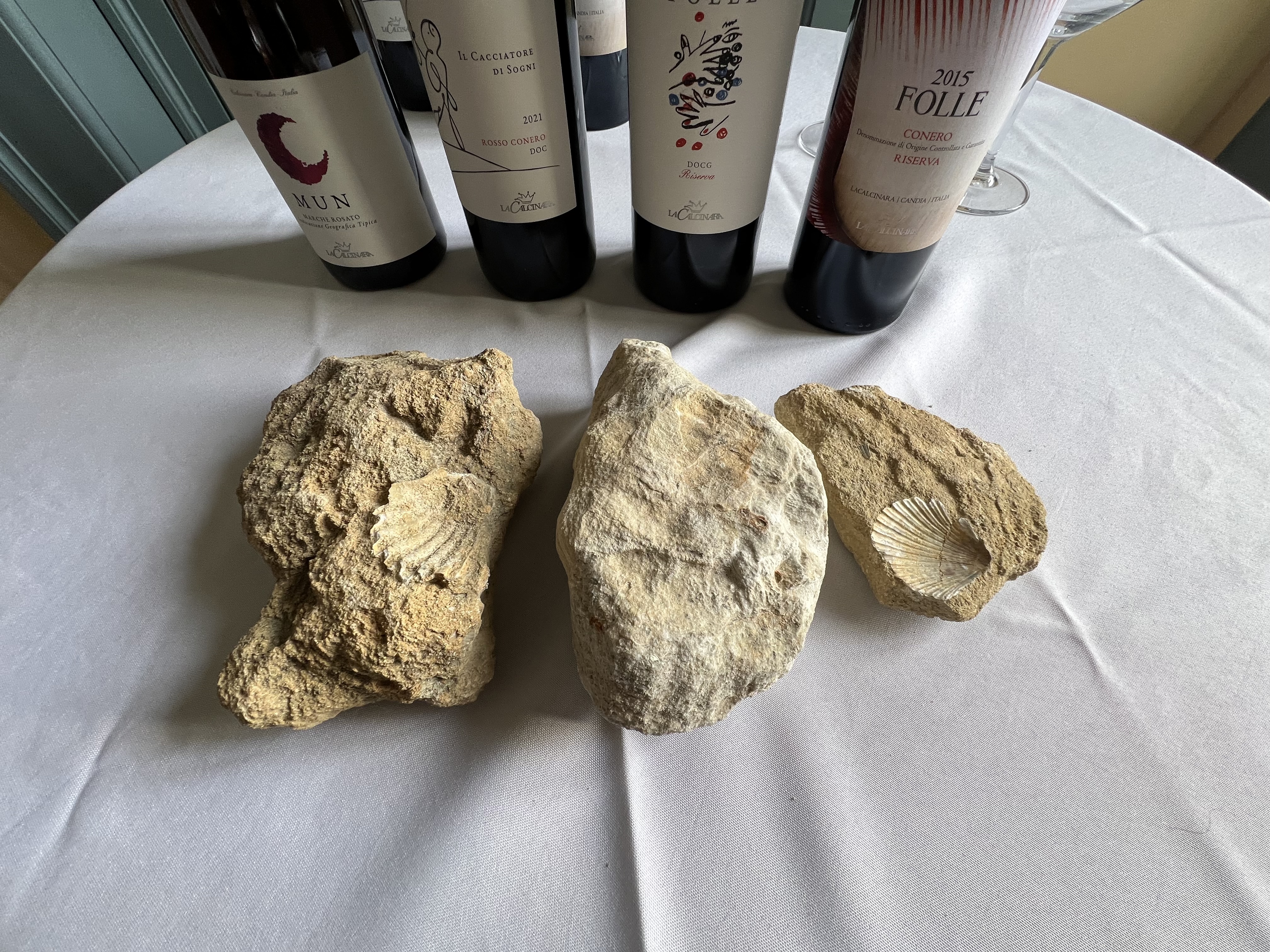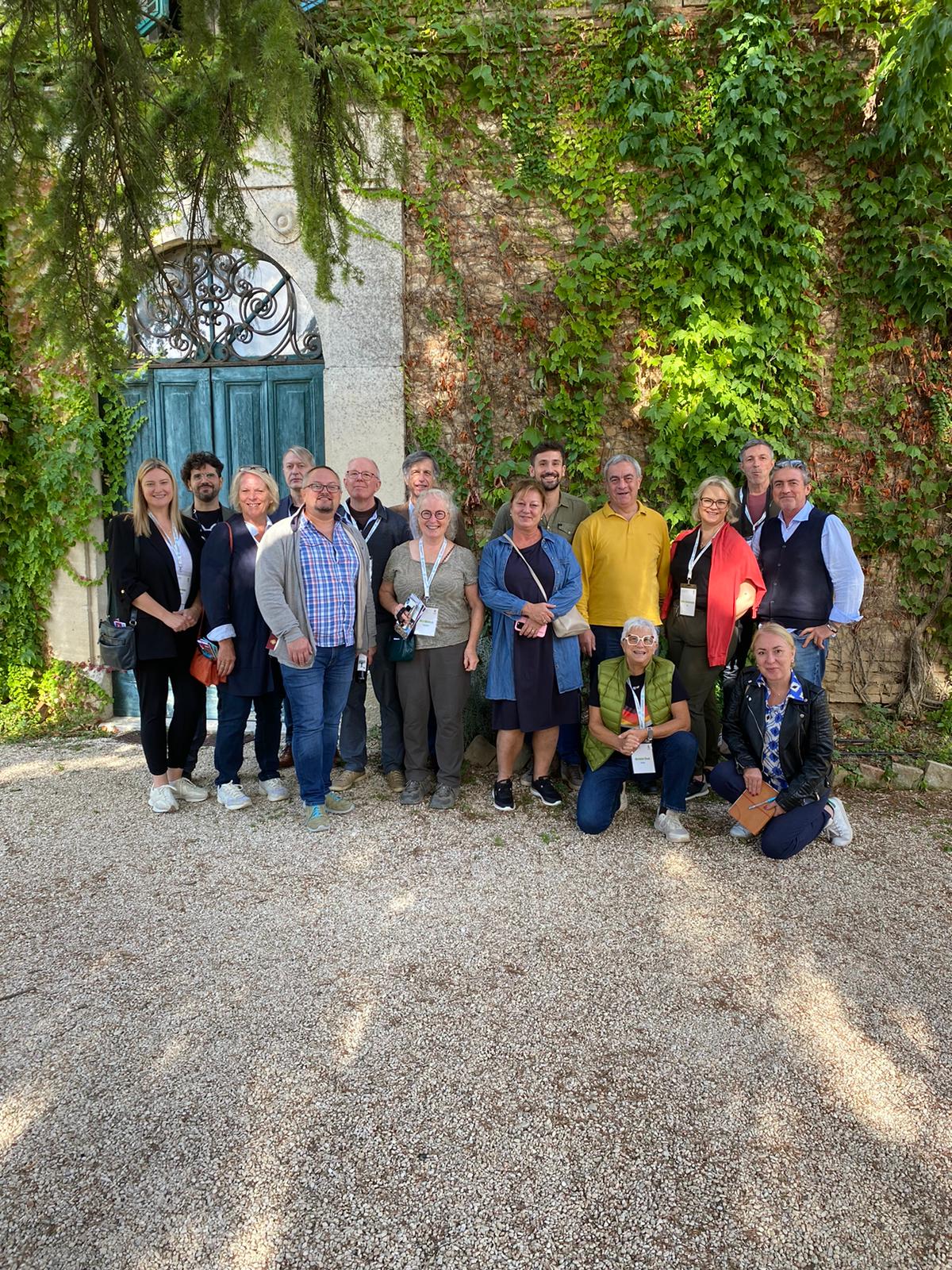BLOG
Movin’ On Up: Marche’s Vinous March Toward World-Wide Respect and Recognition
Andrea Eby
Regional Spotlight

“Andreeeeea! There is no plane from Napoli to Ancona!” This was the incredulous cry that I heard from my Campanian friends when I told them how I was leaving their beautiful region to visit Marche. They were sure that when I arrived at the terminal, that what I thought was going to be a plane would, in fact, turn out to be a bus. They were so adamant that no such flight existed that even I began to doubt the authenticity of the travel itinerary I had received. My relief was therefore clearly visible when I was able to check in for my evening flight to Ancona.
Thanks, to the newly expanded Aeroitalia, flights to Ancona, Marche’s biggest centre, have become a reality from a variety of Italian cities. And, while I recommend everyone drive over the Apennines at some point in their Italian adventures, it is wonderful to have the more relaxing (and considerably quicker) flight option available. From the Tyrrhenian to the Adriatic in under an hour. What more could this weary traveller ask for?
After spending the better part of a month in Toscana and Campania, I was excited to explore the Marche region. My previous experiences only involved views of the beautiful landscapes as I drove through it on the way to Abruzzo. As the guest of LINFA (Azienda Speciale Camera de Comercio delle Marche – Agroalimentare) and the Marche chapter of FIVI (Association of Italian Independent Winemakers), I was anticipating a comprehensive liquid introduction to the region. In fact, I received much more. Not only were we treated to a comprehensive tour of the area’s wine regions, but we were also able to visit the breathtaking Grotte di Frasassi, observe the talents of Offida’s famous lacemakers, and witness the wonders of truly artisanal pasta production at Azienda Agricola Mancini.

If you are unfamiliar with FIVI, I urge you to become familiar. FIVI is an Italian association that was founded in 2008 with the aim of protecting the winegrowing profession. Members of the organization must cultivate their own vineyards, vinify their own wine (they cannot purchase grapes and/or wine) and they must sell their wines under their own name and label. As a consumer, I can be assured that when I see the FIVI logo on a bottle, I am supporting a small-scale, independent producer, and that I am buying a well-made, delicious wine. In my experience, FIVI winemakers take great pride in what they do, and this often translates into delicious wines that are extremely reflective of the terroir from which they came.
Marche has a long viticultural history that, for the most part, has remained loyal to the region’s native and historical grape varieties. The reluctance to embrace international varieties (that were readily adopted in neighbouring regions) has, in the end, turned out to be a very good thing. The region’s vinous reputation is centred around a trio of varieties: Verdicchio, Sangiovese, and Montepulciano (which account for roughly half of the vineyard area). These superstars are supported by a cast of noteworthy grapes such as Lacrima, Vernaccia Nera, Pecorino, Biancame, and Passerina (to name a few).
Over the course of three days Marche’s FIVI producers organized several tastings that were designed to showcase the diversity, versatility, and brilliance of their regional varieties. We were treated to all manner of expressions, from Pet Nats to passiti, from every corner of Marche’s viticultural areas. Some of the most memorable wines came courtesy of Verdicchio.

Many readers probably still associate Verdicchio with Fazi Battalgia’s famous, green, amphora-shaped bottle that propelled the variety to the world stage. And, while that bottle still exists, Verdicchio, today, is so much more.
The variety has the ability to produce a variety of wine styles, from traditional method sparkling wines, all the way to delicious, dessert-style passiti. Despite its versatility, it is perhaps, the dry, still versions that deserve the most attention. Delicious when young, the top-quality examples have the potential to develop into seriously complex, elegant wines when given the chance to mature in bottle.
While Verdicchio represents one of Marche’s shining stars. I urge you not to stop your vinous explorations there. Many other Marche whites deserve more attention on the world stage. When fans of Sauvignon Blanc and Pinot Grigio finally tire of tasting the same old, same old (do they ever tire of these things?), there are many exciting Marche alternatives.
Pecorino is one such alternative. Native to Abruzzo, the variety has found a surrogate home in Marche. Many of the examples we tried highlighted the crisp, clean citrus notes of the variety. However, delicious, skin-macerated, more savoury versions are also being made. Passerina is another variety worth exploring. Slightly more tropical and floral than Pecorino, with refreshing levels of crisp acidity, its wines are the perfect alternative to Pinot Grigio. And please don’t discount the blends of Trebbiano Toscano, Passerina, and Pecorino that appellations such Falerio DOC are crafting! Along with bottlings of the rare Ribona grape, these blends represented some of the most unique and memorable wines that we tasted.
Recently, Marche has been extremely successful in elevating the reputation of its distinctive white wines. With so much attention being afforded to varieties such as Verdicchio and Pecorino it is easy to forget that Marche produces even more red wine than white! Sangiovese remains the region’s most planted grape, closely followed by Montepulciano. Varietal examples, as well as many delicious blends, can be found throughout the region, although the later-ripening Montepulciano seems to find its best expressions in the south. Stylistically, the wines vary from savoury, cherry-fruited Sangiovese with fine, dusty tannins, to full-bodied, black-cherried Montepulciano with ripe, mouth-filling tannins. Consumers would do well to consider Marche for their next bottle of Italian red wine.
For those looking to expand their palates, Marche also offers some truly unique red wines. Some of the most distinctive wines are made with varieties such as Lacrima and Vernaccia Nera. These full-bodied and deeply coloured wines can shock consumers the first time they try them. Both are exotically scented, and feature intensely perfumed notes of rose petals, violets, and wild berries—aromas that most people are shocked to discover in a glass of red wine. While sweeter versions can be found, there are many dry examples that pair superbly with exotically spiced dishes and savoury charcuterie.

As you can see, Marche truly does have something for everyone. World-class wines, stunning natural landscapes, passionate producers, and delicious regional cuisine make Marche a must for any serious Italophile. Far removed from the crowded streets of Rome and Florence, visitors will appreciate the more relaxed pace that Marche offers. If, unfortunately, a trip to Italy is not in your near future, then I suggest a shorter journey to the Italy section of your local liquor store. Grab a bottle, or two, of FIVI wine from Marche and let the wines take you on an armchair adventure. I suggest you invite a friend, or two, along for the ride!


